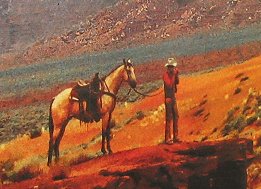In einigen Büros bei uns wird renoviert, was ja an sich sehr gut ist. Nur müssen ein paar Leute jetzt unter erschwerten Arbeitsbedingungen arbeiten.

Your Mission: Reach the Coffemachine and come back without hitting, dripping, and in minimal time
personal weblog of Leo Sauermann
Sowas habe ich noch nicht in Österreich gesehen. In einem Bus der Stadtwerke Kaiserslautern gibt es folgendes Hinweisschild

“Wenn es um den Sitzplatz geht: Das Alter sitzt! Die Jugend steht!”
sehr fein, das bringts zusammen: Loriotscher Humor und praktischer Hinweis.
Das User Interface eines Fernsehers bietet viele verschiedene Interaktionsmöglichkeiten. Kanal wechseln und Lautstärke ändern bedienen wir andauernd. Aber was ist mit Stereo, Teletext oder gar der Sendertabelle?
Nach dem Umzug mussten wir die Kanäle des Grundig Fernseher neu einstellen. Dafür suchte ich etwas im Menü herum und fand den ultimativen Menüpunkt.

“Komplette Neuprogrammierung (bei Wohnortwechsel)”
Dies beschrieb genau meine Situation. Ein Feature dass im Leben eines Fernsehers vielleicht nie aufgerufen wird, und ich durfte es machen.
in unseren neuen Heimat gibt es Zigarettenwerbungen. Das ist für uns neu, ist es doch in Österreich nicht so. Interessant etwa dieses Marlboro Plakat. Es zeigt das typische “Marlboro County” irgendwo im Westen der USA. Beim am Plakat vorbeigehen fiel mir auf, dass das Bild leicht verwaschen wirkt. Tatsächlich schaut das ganze im Detail aus, als ob es gemalt ist. Vielleicht eine Übermalung eines Photos. Jedenfalls schaut Marlboro Man Reiter und Pferd aus wie mit Acryl gemalt. Lebt der Marlboro Man nicht mehr?

Browsing along the PlanetRDF I came to Danny Ayers site which led me to the Syndication Subscription Service.
This is a good example of how localhost integration works. It shows 15 popular news-aggregation systems and provides links that enable the user to add Danny’s blog to their newsreader. Interesting is, that there si no common way of doing this: There is no “add this rss feed to my newsreader” system call in the operating system or the browser.
All products implement different ways to do it. The locally instlalled systems open http ports at the locahlost and wait for http requests. The web based systems run on their servers (f.e. yahoo) and wait for the commando there.
The intersting researcher next door to my office is Tristan Miller, and we didn’t talk much. Didn’t know much about him, but I just saw his homepage
http://www.nothingisreal.com/home
and his cool guide for sauerkraut writers like me – which is real useful.
http://www.dfki.uni-kl.de/~miller/publications/advice.pdf
Thats to do sunday night, reading the homepages of other researcher, I have to go to bed…
Morgen besuchen wir einen Bekannten in einer Gemeinde, der Stadtmission Kaiserslautern. Bin schon gespannt.
I heard of the IBM Semantics Toolkit and had to d/l it to give it a try.
http://www.alphaworks.ibm.com/tech/semanticstk
Roughly, it consists of three parts (see above site):
I focused on Orient, as it is Eclipse based and a visual editor. The other two may be interesting, but –
1. I am Jena based
2. they are not open source
3. RStar is only IBM databases (needs either IBM DB2 or IBM CloudScape which I don’t have and are too lazy to install. Cloudscape seems to be an embedded database, whatever, I stick to Orient first)
Installation is easy, read their readme.txt and unzip a few files. One mistake I made was to add Orient to my existing Java Development Eclipse – that does not work. You need the Eclipse platform, 3.0.
Then I changed to the Window-Open Perspective-Other-Orient. Voila. easy. Good looking. Reminds me of Protege. only neater. Nice typos “Please select a Konwledge I/O”. First try: new project. A lot of stunning options comes up, I keep pressing “next”. Ah, next experiment – import FOAF. Like Danny Ayers’ FOAF driven Development. WORKS. I see foaf:Person and other stuff.
Then i tried some editing. Disturbing things happen: when I create a new resource, to add its rdf:type and therefore class, I have to enter the URI of the class. At least I can select the namespace, but the existing classes are not listed. Drag-Drop doesn’t work either. Can this be true… lets see. Yes, this is low tech. I am not able to even add properties to this resource, or maybe I have to try harder. Ok, it is not a resource editor, it is an ontology editor. On the ontology side, it is better. I can add properties to classes – again by entering the URI of the property by hand.
Undo does not work also. Not always.
And then the obvious RDFS limit. The thing I often do is have one property with two classes as domain. I do this and add “foaf:depicts” as a property to “foaf:Project” (ok, not very wise). boom – it has two rdfs:domain entries, which has some disadvantages (the property is only valid for resources that are of type of both classes). This is only expressable in OWL, so RDFS crashes here anyway, so maybe this is a desired behaviour.
Export to RDF is good. The ontology comes out as clean, nice RDFS.
my bit: cool looking UI, eclipse rules. Good stable IBM ground, the EODM framework looks like it can handle this. Very easy to install, no exceptions, everything works – end user compatible. But no features, we have to wait and see until they implemented all of Protege 🙂
übrigens, unsere neue Heimat ist
und einen Stadtplan gibts auch:
http://www3.kaiserslautern.de/cityguide/
Wir wohnen recht zentral in der Fussgängerzone.Man liest hier die
http://www.rheinpfalz.de
Da müssen wir uns noch ein Abo checken. Sonst lesen wir natürlich weiterhin den http://www.falter.at
time ago I read an article about the breakpoint 2004, a convention where Demo developers meet and hack.
btw: a “Demo” is the animated thing that usually showed up before your Amiga and C64 Games, including some text like “brought to you by the gnoz, greetings to flashman and eggdropp”
demo coders are great hackers and I want to keep the urls:
http://ftp.snt.utwente.nl/pub/misc/demoscene/
http://www.theprodukkt.com/kkrieger.html#dload
http://breakpoint.untergrund.net/